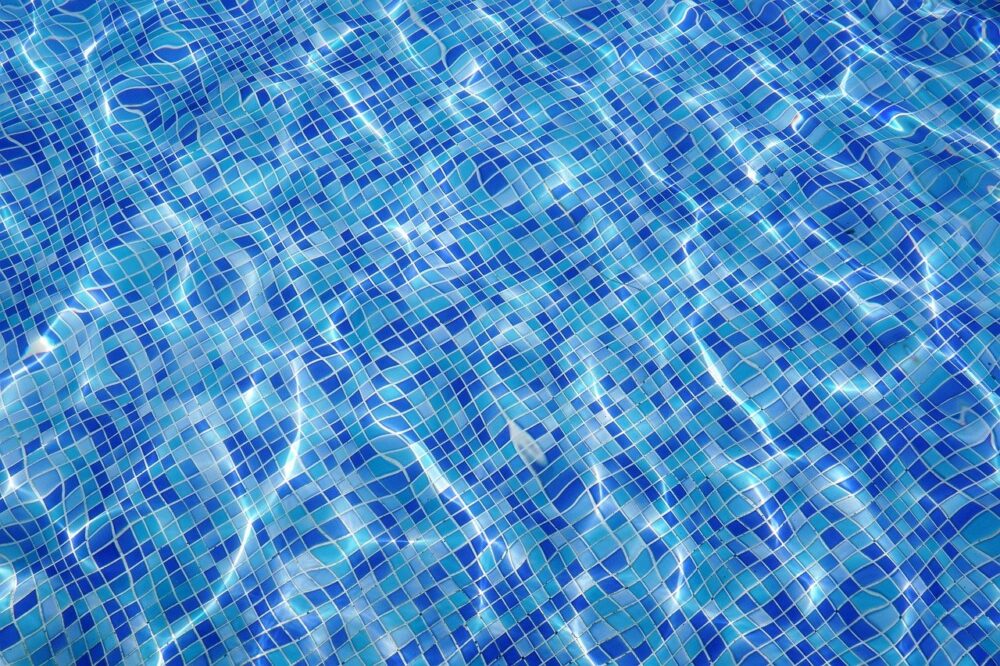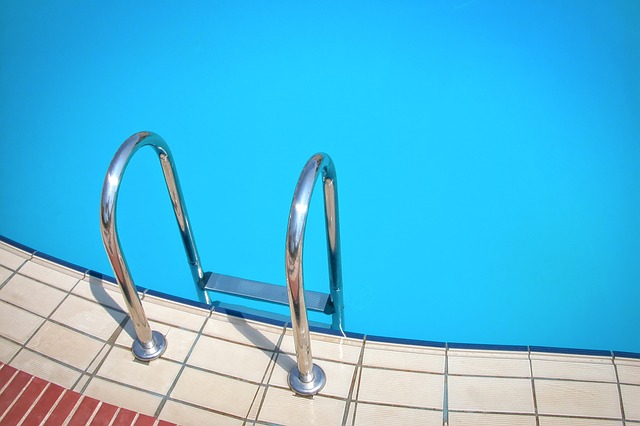Are you looking to revitalize your swimming pool and give it a stunning makeover? Look no further than pool painting, a transformative process that can breathe new life into your pool and enhance its overall aesthetic appeal. With a fresh coat of paint, your swimming pool can become a captivating focal point in your outdoor space, creating an inviting oasis for relaxation and enjoyment. Pool painting involves applying a specialized paint designed specifically for underwater use. This high-quality pool paint is formulated to withstand the harsh conditions of constant water exposure, including chemicals, UV rays, and varying temperatures.
By choosing the right paint, you can ensure long-lasting durability and vibrant color retention, resulting in a beautifully rejuvenated pool that will withstand the test of time. The first step in the pool painting process is thorough preparation. This includes draining the pool completely and ensuring that the surface is clean, free from debris, and properly prepared for painting. Any existing coatings or loose paint must be removed, and the surface should be sanded or etched to promote adhesion. Additionally, any cracks or imperfections should be repaired to ensure a smooth and flawless finish. Once the preparation is complete, it’s time to apply the paint. Pool paints are available in a variety of colors, allowing you to choose the perfect shade to complement your outdoor space and personal style. Whether you prefer a classic blue hue reminiscent of tranquil waters or a vibrant and bold color that adds a splash of personality, the options are endless. The application process requires precision and attention to detail. It is essential to follow the manufacturer’s instructions regarding the number of coats, drying times, and proper application techniques. Generally, pool paint can be applied using a roller, brush, or spray equipment, depending on the specific product and the desired finish.
Each coat should be allowed to dry thoroughly before applying the next, ensuring optimal adhesion and a smooth, professional-looking result. Besides the aesthetic benefits, pool painting also serves practical purposes. The paint acts as a protective barrier, safeguarding the pool’s surface against the damaging effects of chemicals, algae growth, and general wear and tear. It also helps to create a smoother surface, making cleaning and maintenance easier and more efficient. To maintain the longevity of your freshly painted pool, regular maintenance is crucial. This includes proper water balance, regular cleaning, and periodic touch-ups as needed. By following these maintenance practices, you can ensure that your pool retains its beauty and durability for years to come. In conclusion, pool painting offers a remarkable opportunity to transform your swimming pool into a visually stunning masterpiece. Through the application of a fresh coat of paint, you can breathe new life into your pool, enhancing its appearance and creating an inviting space for relaxation and entertainment. By utilizing high-quality, underwater-specific paint and adhering to proper application and maintenance techniques, you can enjoy a vibrant and long-lasting pool that will be the envy of all. Choose pool painting to unlock the full potential of your swimming pool and elevate your outdoor oasis to new heights of beauty and elegance.
Why should you consider painting your swimming pool?
Why should you consider painting your swimming pool?Painting your swimming pool can be a transformative process that not only enhances its aesthetic appeal but also provides numerous practical benefits. Whether you have a concrete, fiberglass, or plaster pool, giving it a fresh coat of paint can rejuvenate its appearance and extend its lifespan. In this article, we will explore the compelling reasons why you should consider painting your swimming pool.
- Aesthetics: Over time, exposure to sunlight, pool chemicals, and the elements can cause the original surface of your pool to fade, discolor, or develop unsightly stains. Painting your swimming pool allows you to revitalize its look, creating a visually appealing and inviting space for relaxation and recreation. With a wide range of colors and finishes available, you can customize your pool’s appearance to suit your personal taste and complement your outdoor surroundings.
- Protection: The paint used for swimming pool surfaces is specially formulated to provide protection against various factors that can compromise the integrity of the pool structure. It acts as a barrier, shielding the underlying material from harmful UV rays, chemical erosion, and water penetration. By applying a durable and high-quality pool paint, you can significantly extend the lifespan of your pool, minimizing the need for extensive repairs or resurfacing in the future.
- Waterproofing: One of the key benefits of pool painting is its ability to waterproof the pool surface. The paint creates a watertight seal, preventing leaks and reducing the risk of water seeping into the pool’s foundation. This is particularly beneficial for concrete or plaster pools, as these materials are susceptible to cracks and deterioration over time. By maintaining a waterproof barrier, you can avoid potential structural issues and costly repairs.
- Surface Protection: In addition to waterproofing, pool paint provides a protective layer that helps to safeguard the pool’s surface against abrasion, chemical damage, and the growth of algae or mold. The paint creates a smooth and easy-to-clean surface, making it more resistant to stains, scaling, and discoloration caused by the constant exposure to chlorine and other pool chemicals. Regular maintenance becomes easier and less time-consuming, allowing you to enjoy your pool more and spend less time on upkeep.
- Cost-Effectiveness: Painting your swimming pool is a cost-effective alternative to resurfacing or replacing the entire pool. Resurfacing can be a major undertaking, involving significant time, effort, and expense. By opting for pool painting, you can achieve a similar rejuvenating effect at a fraction of the cost. It is a relatively straightforward process that can be completed in a shorter timeframe, minimizing disruption to your pool usage.
In conclusion, painting your swimming pool offers numerous advantages beyond its visual appeal. It protects the pool surface, enhances its durability, and extends its lifespan. Additionally, the waterproofing and surface protection properties of pool paint contribute to easier maintenance and reduced repair costs. Consider giving your swimming pool a fresh coat of paint to transform its appearance, protect its structure, and create a more enjoyable swimming experience for years to come.

What are the benefits of pool painting?
When it comes to maintaining and improving the aesthetics of your swimming pool, pool painting stands out as an excellent option. Applying a fresh coat of paint to your pool not only revitalizes its appearance but also provides numerous benefits that go beyond mere visual appeal. In this article, we will delve into the advantages of pool painting, highlighting the technical aspects that make it a popular choice among pool owners.
- Enhanced Durability and Protection:
One of the key advantages of pool painting is the enhanced durability it offers. Pool paints are specifically designed to withstand the harsh elements that pools are exposed to, such as UV radiation, fluctuating temperatures, chemicals, and constant water contact. These specialized paints create a protective barrier on the pool’s surface, guarding against fading, chalking, and corrosion. With a high-quality pool paint, you can ensure long-term protection for your pool, reducing the need for frequent repairs and maintenance. - Improved Safety:
Safety is a paramount concern when it comes to swimming pools. Pool painting can contribute to a safer swimming environment by incorporating slip-resistant additives into the paint formulation. These additives create a textured surface that enhances traction and reduces the risk of slips and falls, especially when the pool area is wet. By investing in pool painting, you prioritize the safety of swimmers, providing peace of mind for both guests and pool owners. - Easy Maintenance and Cleaning:
Maintaining a clean and inviting pool can be a time-consuming task. However, pool painting simplifies the maintenance process significantly. The smooth, non-porous surface created by the paint makes it easier to clean dirt, debris, and algae buildup. Additionally, the paint’s resistance to fading and staining means that the pool will retain its vibrant appearance for an extended period, requiring less frequent cleaning and fewer chemical treatments. With pool painting, you can spend less time on maintenance and more time enjoying your pool. - Cost-Effective Solution:
Compared to other pool renovation options, pool painting offers a cost-effective solution to transform your pool’s appearance. Repainting a pool is generally more affordable than resurfacing or replacing it entirely. By choosing pool painting, you can give your pool a fresh and updated look without breaking the bank. Additionally, the longevity of high-quality pool paints ensures that your investment will last, further reducing long-term costs associated with pool maintenance and repairs. - Versatile Design Options:
Pool painting opens up a world of design possibilities, allowing you to customize the look of your pool according to your preferences. Pool paints are available in a wide range of colors and finishes, enabling you to create a unique and personalized swimming pool. Whether you prefer a classic blue shade to evoke a tropical oasis or a modern and sleek aesthetic, pool painting offers the versatility to bring your vision to life. The ability to tailor your pool’s appearance to match your style adds an extra level of enjoyment to your swimming experience.
In conclusion, pool painting offers a multitude of benefits that extend beyond visual enhancement. From increased durability and protection to improved safety and easy maintenance, the advantages of pool painting make it an attractive choice for pool owners. Moreover, its cost-effectiveness and versatile design options make pool painting a popular solution for transforming swimming pools. By opting for pool painting, you can revitalize your pool’s appearance while enjoying the long-term benefits it provides.

How to choose the right type of paint for your pool?
Choosing the right type of paint for your pool is essential to ensure its longevity, aesthetic appeal, and overall durability. When it comes to pool painting, various factors need to be considered, such as the type of surface, environmental conditions, and the specific requirements of your pool. By understanding these factors and selecting the appropriate paint, you can transform your swimming pool with a fresh coat of paint and enjoy its beauty for years to come.
- Assessing the Surface:
Before choosing a paint type, it’s crucial to evaluate the surface of your pool. Pools can be constructed from different materials like concrete, fiberglass, or gunite, and each surface requires a specific type of paint. Concrete pools, for instance, may need a different paint than fiberglass pools due to their different characteristics and porosity. - Consider Environmental Factors:
The environment surrounding your pool plays a significant role in selecting the right paint. If your pool is exposed to direct sunlight for extended periods, it’s important to choose a paint that offers UV protection. UV-resistant paints help prevent fading, chalking, and damage caused by the sun’s harmful rays. Additionally, if your pool is located in an area with high humidity or frequent rain, opting for a waterproof and weather-resistant paint is essential to maintain its integrity. - Determine the Pool’s Usage:
The type of paint you choose may also depend on the pool’s usage. If your pool is primarily for residential use and experiences moderate foot traffic, a standard pool paint may suffice. However, if the pool is intended for heavy usage, such as in commercial settings or public facilities, a more durable and high-performance paint, like epoxy or chlorinated rubber paint, may be necessary. - Consultation and Maintenance:
If you’re unsure about the right type of paint for your pool, it’s always recommended to consult with a pool professional or paint supplier. They can offer valuable guidance based on your specific pool requirements, surface condition, and environmental factors.
After selecting and applying the appropriate paint, proper maintenance is crucial to prolong its lifespan. Regular cleaning, pH balance monitoring, and water treatment will help preserve the paint’s integrity and prevent the growth of algae or mold. In conclusion, choosing the right type of paint for your pool is a decision that should be based on careful consideration of factors such as surface type, environmental conditions, pool usage, and paint characteristics. By selecting the appropriate paint and following proper maintenance practices, you can transform By selecting the appropriate paint and following proper maintenance practices, you can transform your swimming pool with a fresh coat of paint and enjoy its renewed beauty, enhanced durability, and extended lifespan for years to come. Whether you have a concrete, fiberglass, or gunite pool, the right paint choice, tailored to your specific needs, will ensure that your pool remains a stunning centerpiece of your outdoor oasis. Invest in quality paint and professional guidance, and relish the satisfaction of diving into a revitalized and visually captivating swimming pool.

Common mistakes to avoid when painting a pool
Common Mistakes to Avoid When Painting a PoolPainting a swimming pool can be a transformative process, giving your pool a fresh and vibrant look. However, it is important to approach pool painting with caution and precision to ensure long-lasting results. To help you achieve a successful pool painting project, here are some common mistakes to avoid:
- Insufficient Surface Preparation:
One of the most critical steps in painting a pool is thorough surface preparation. Neglecting this step can lead to paint failure and a shorter lifespan for your pool’s new coating. Make sure to clean the pool surface meticulously, removing all debris, dirt, algae, and old paint. Additionally, inspect the pool for cracks or damages that may need repair before painting. - Choosing the Wrong Paint Type:
Using the wrong type of paint can result in disappointing outcomes. Not all paints are suitable for swimming pools, as they need to withstand constant exposure to water, chemicals, and UV radiation. Select a high-quality epoxy, rubber-based, or chlorinated rubber pool paint that is specifically designed for underwater environments. Consult with a professional or read manufacturer guidelines to ensure you choose the right paint for your pool. - Improper Mixing and Application:
Incorrectly mixing or applying the paint can lead to uneven coverage, streaks, and an unprofessional finish. Follow the manufacturer’s instructions precisely when mixing the paint components, and ensure the paint is properly blended. When applying the paint, use the recommended tools such as rollers or sprayers and maintain a consistent application technique to achieve a smooth and uniform appearance. - Inadequate Drying Time:
Rushing the drying process is a common mistake that can compromise the durability of the paint. Allow sufficient drying time between coats as specified by the paint manufacturer. Similarly, wait for the recommended curing period before refilling the pool with water. Prematurely filling the pool can cause the paint to peel or blister, requiring you to redo the entire project. - Neglecting Maintenance and Water Chemistry:
Once the pool painting is complete, proper maintenance and water chemistry play a crucial role in preserving the paint’s integrity. Failure to regularly clean and balance the pool’s water can result in chemical imbalances, staining, or deterioration of the paint. Test the water regularly, maintain proper pH levels, and use appropriate pool chemicals to prevent damage to the painted surface. - Lack of Protective Coating:
Applying a protective topcoat is an essential step that many overlook. A topcoat acts as an additional layer of defense against fading, chemical damage, and UV rays. It enhances the durability and longevity of the pool paint, making it a worthwhile investment. Ensure the topcoat you choose is compatible with the pool paint and follow the manufacturer’s instructions for application.
By avoiding these common mistakes and following the best practices for pool painting, you can achieve a visually stunning and long-lasting result. Remember, meticulous surface preparation, using the right paint and tools, allowing ample drying time, maintaining water chemistry, and applying a protective topcoat are all crucial steps for a successful pool painting project. With proper care and attention to detail, your newly painted pool will be a beautiful and inviting oasis for years to come.

How often should you repaint your pool for optimal maintenance?
How often should you repaint your pool for optimal maintenance?Proper maintenance is crucial for keeping your swimming pool in top condition, and one aspect that requires attention is the repainting of the pool surface. Painting your pool not only enhances its aesthetic appeal but also protects it from various elements that can cause deterioration over time. If you’re wondering about the ideal frequency for repainting your pool to ensure optimal maintenance, this article will provide you with valuable insights. The longevity of a pool paint job depends on several factors, including the type of paint used, the quality of surface preparation, and the overall maintenance practices. In general, it is recommended to repaint your pool every five to seven years to maintain its beauty and functionality.
However, it is essential to assess the condition of your pool regularly and make adjustments to this timeline based on the specific requirements of your pool. One significant factor to consider when determining the frequency of repainting is the type of paint used. Epoxy, rubber, and acrylic-based paints are commonly used for pool surfaces due to their durability and resistance to chemicals and UV rays. Epoxy paint, known for its exceptional durability, can last longer than other types, typically up to seven years. On the other hand, rubber and acrylic-based paints may require repainting every five to six years, depending on the wear and tear they experience. The condition of the pool surface also plays a vital role in determining when it’s time for a fresh coat of paint. Regular inspections should be conducted to check for signs of peeling, chipping, fading, or any other damage to the paint. If you notice these issues, it’s an indication that the paint is deteriorating and needs to be reapplied. Ignoring these signs can lead to more severe problems, such as surface roughness, water leakage, or the growth of algae and bacteria. Furthermore, the pool’s usage and exposure to external elements can impact the frequency of repainting. Pools that experience heavy usage, including frequent swimming and pool parties, may require more frequent repainting. Similarly, pools located in areas with intense sunlight, extreme weather conditions, or high levels of chemical exposure might also need more frequent touch-ups. To optimize the maintenance of your pool, it is crucial to follow a regular cleaning and maintenance routine.
This includes routine brushing and vacuuming to remove debris, proper water chemistry balance, and regular inspections of the pool equipment. By maintaining a clean and well-balanced pool environment, you can extend the lifespan of the paint job and minimize the need for frequent repainting. In summary, repainting your pool is an essential part of its maintenance routine. While the recommended frequency for repainting is generally every five to seven years, it is crucial to consider factors such as paint type, surface condition, pool usage, and environmental exposure. Regular inspections and maintenance practices will help you identify signs of paint deterioration and take timely action. By following these guidelines and investing in proper pool painting, you can ensure your swimming pool remains visually appealing and structurally sound for years to come.


Thank you very much for your valuable advice. 🙂